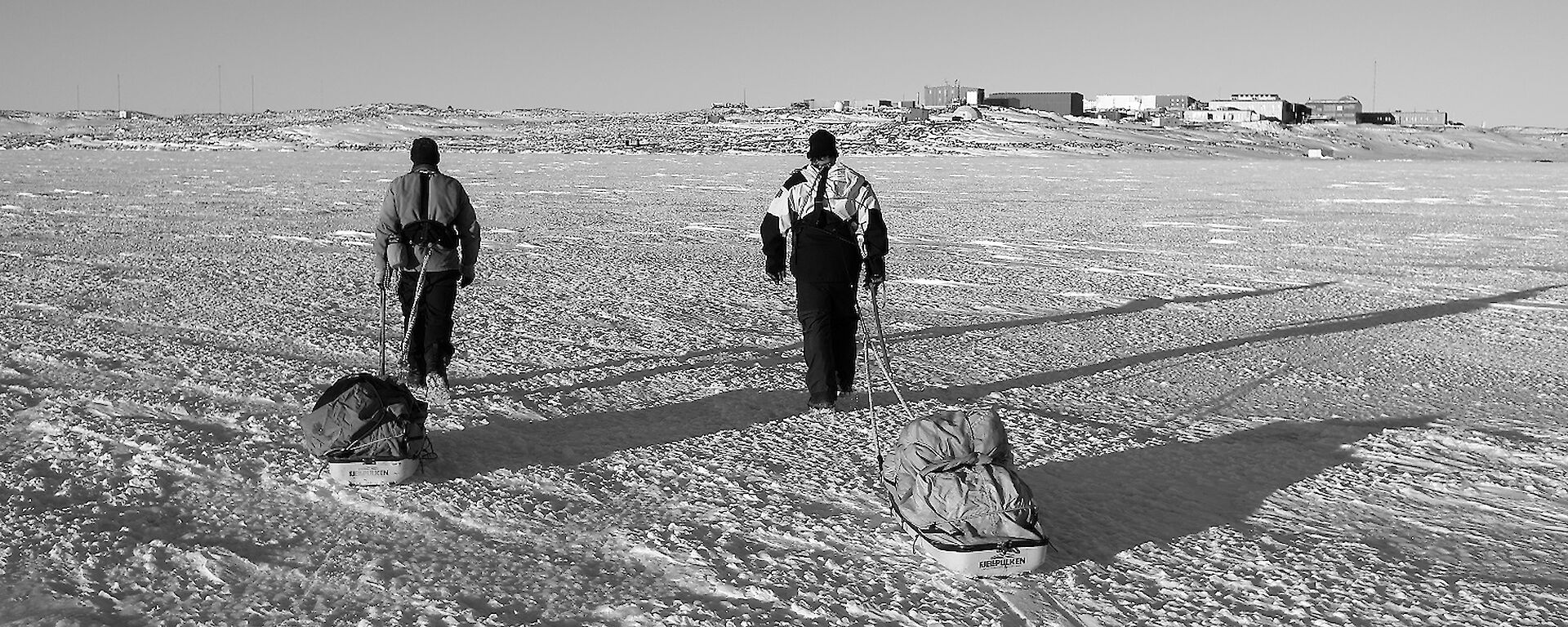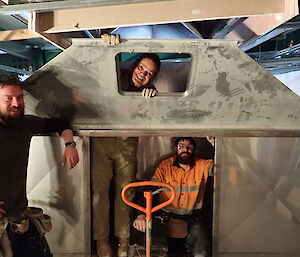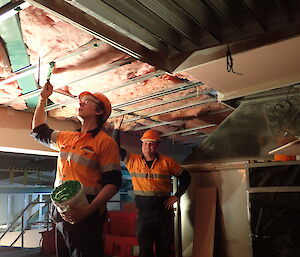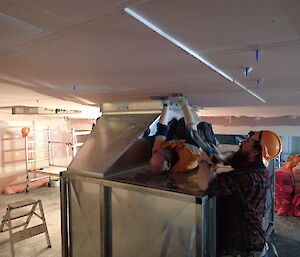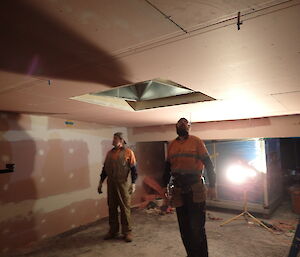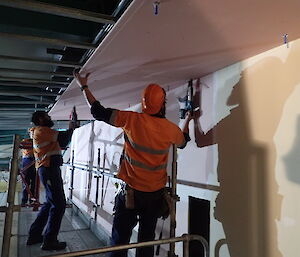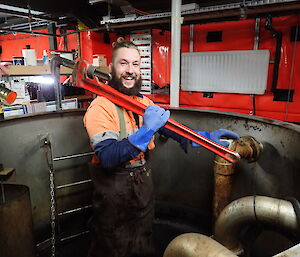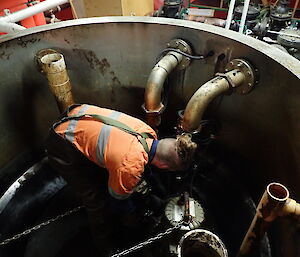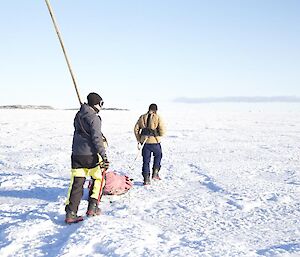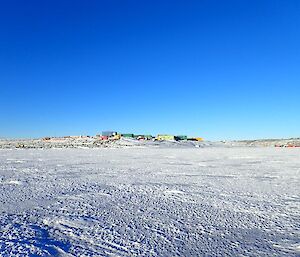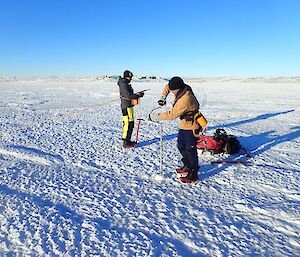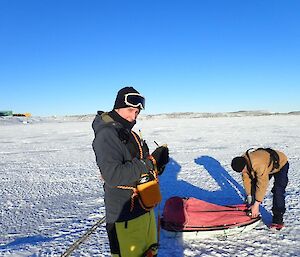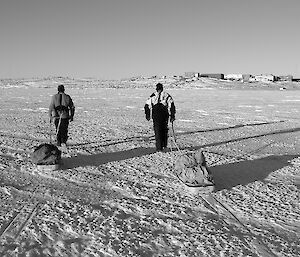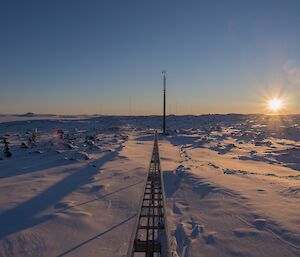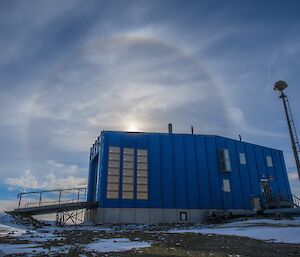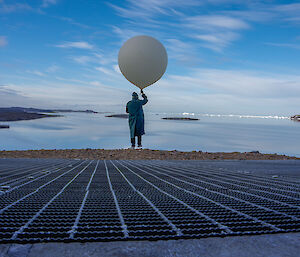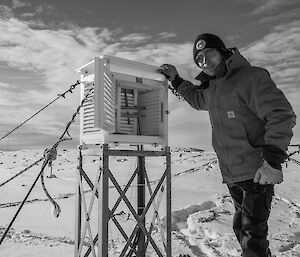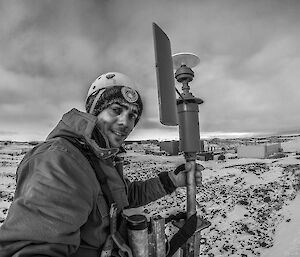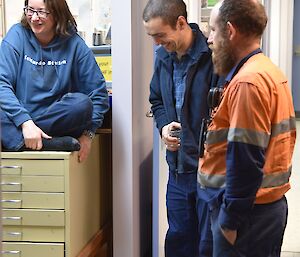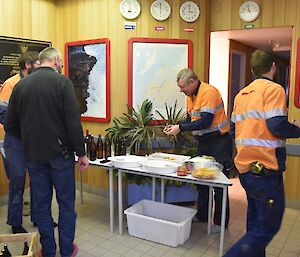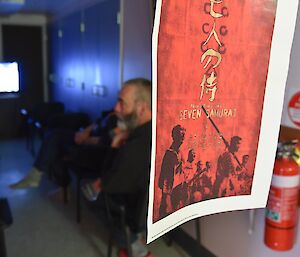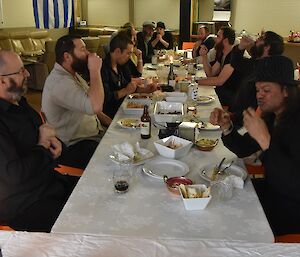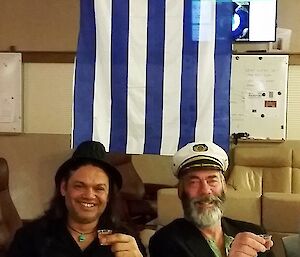For our regular subscribers, following on from last week’s story regarding works in the sewer tank, we are pleased to report that all works were completed successfully and thanks to Mark D and Ducky all is right with the world once again. As the old saying goes, water flows downhill and pay day’s Thursday.
This week at Davis: 24 April 2015
Ice measurements
Following many weeks of colder temperatures and light winds, the sea ice outside of Davis Station has increased to the point where we can once again contemplate using it for operational and recreational purposes.
In order to verify its suitability for field movement and as part of an ongoing sea ice measurement project, Adam C, assisted by Dennis B and James M undertook a first foray out onto the ice to test it at regular intervals and install three markers for continual sea ice measurements throughout the coming months.
A job from the heavens
It was nine months ago today that I was sitting at my desk, contemplating a new job somewhere exotic and warm. Today, I find myself strapped to the top of an anemometer tower located 68 degrees South in temperatures of −20°C. Thus follows a day in the life of a Bureau of Met technician at Davis Station.
This time of year at Davis we are losing nine minutes of daylight per day, thus it is now that the workday begins and ends in the dark. Once kitted up with head torch and gloves, I begin the 500m commute through knee-deep snow to the Met building.
The first big job for the day is the morning weather obs. (observation) at the Stevenson screen. You aren’t just a technician! You are now a qualified weather observer as well following three months of training in Melbourne. Let’s have a look at the clouds — dark with a hint of altocumulus.
On today’s agenda is the servicing of the wind anemometer and vane, which sits at the top of a fixed mast over 30ft high. Safety is the top priority here, so step one is to prepare and inspect all the climbing gear. Once satisfied, I make my way to the top of the mast with my trusty sidekick Greg, the station comms tech, keeping an eye on me from the ground. A second to admire the view, and take a few choice photos, then onto the job of checking the anemometer to ensure it lasts the winter.
Upon returning from the heavens, it is now that time — the next daily obs. Look! What is that cloud hovering over the Met building? A huge halo! It must be cirrostratus.
The evening approaches, so comes the time of today’s weather balloon launch. Donning my hydrogen safety gear I make ready the balloon, fill it with gas and get the Radiosonde ready for launch. Stepping out into wide open skies, the balloon is released and starts transmitting data on the weather.
Social events
Last Friday expeditioners were treated to a gathering hosted by our newly arrived communications technical officer Mr Greg B, in the communications office. Greg, with assistance from Damian in the kitchen, had prepared nibbles and refreshments for all, against a backdrop of cinematic masterpieces in three makeshift cinemas established in hallways, workshops and conference rooms of the operations building.
On Sunday evening, we celebrated a Paniyiri Greek Festival (Davis style) in honour of the current (and original festival), the biggest event in Australia celebrating all things Greek taking place this week. Alex R and his helpers served up a bounty of Mezethes followed by Kyria (main course) and Epithorpia (dessert). Expeditioners arrived for pre dinner drinks dressed as their favourite Greek figures, demonstrating a breadth of appreciation of Greek history and culture ranging from Sophocles and Spartans to an Aristotle Onassis.

